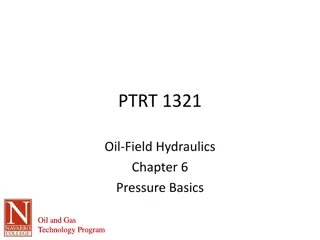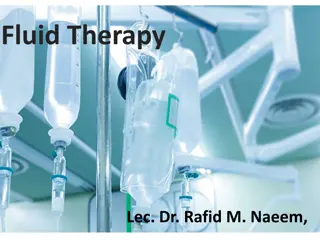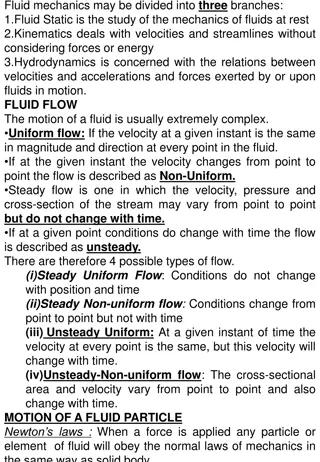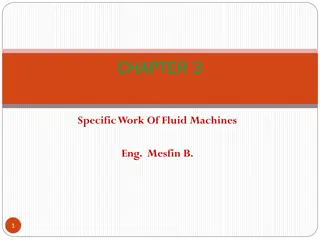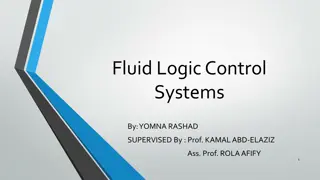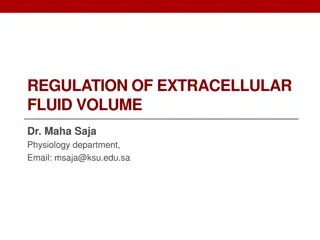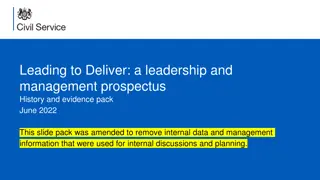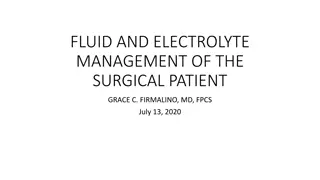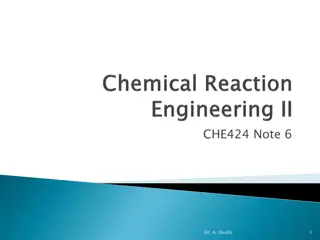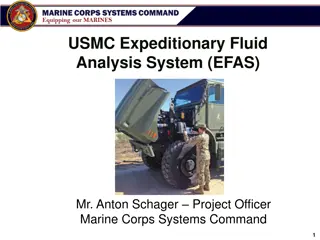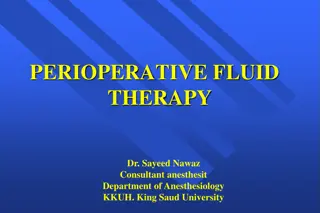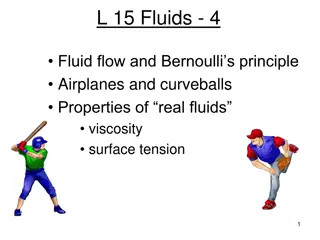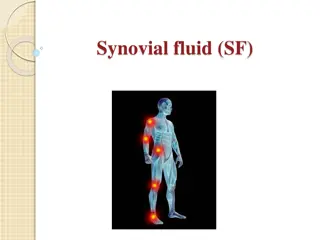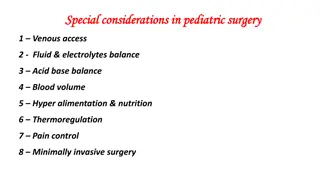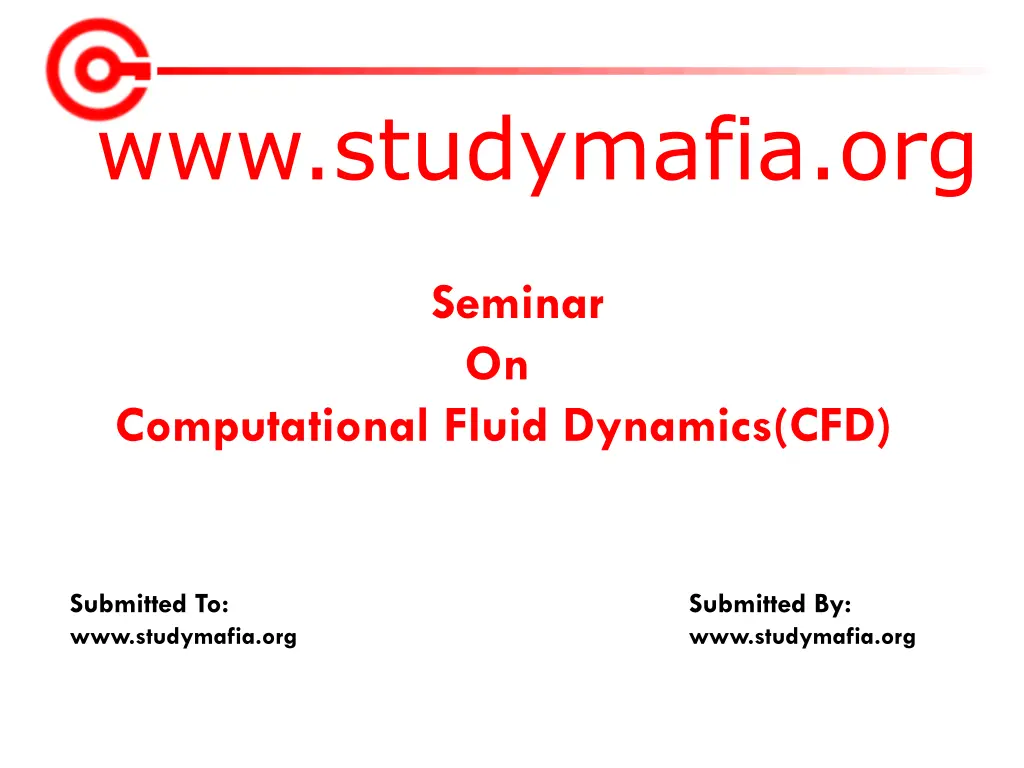
Exploring Computational Fluid Dynamics (CFD) in Various Industries
Dive into the world of Computational Fluid Dynamics (CFD) to understand its applications in aerospace, automotive, biomedical, and more. Learn about CFD simulations, advantages, limitations, and where it is commonly used. Discover the physics of fluid dynamics and how CFD helps in predicting fluid flow, heat transfer, and chemical reactions through numerical processes.
Download Presentation

Please find below an Image/Link to download the presentation.
The content on the website is provided AS IS for your information and personal use only. It may not be sold, licensed, or shared on other websites without obtaining consent from the author. If you encounter any issues during the download, it is possible that the publisher has removed the file from their server.
You are allowed to download the files provided on this website for personal or commercial use, subject to the condition that they are used lawfully. All files are the property of their respective owners.
The content on the website is provided AS IS for your information and personal use only. It may not be sold, licensed, or shared on other websites without obtaining consent from the author.
E N D
Presentation Transcript
www.studymafia.org Seminar On Computational Fluid Dynamics(CFD) Submitted To: www.studymafia.org Submitted By: www.studymafia.org
Contents What is Computational Fluid Dynamics(CFD)? Why and where use CFD? Physics of Fluid Grids Boundary Conditions Numerical Staff Applications Advantage Limitation
What is CFD? Computational fluid dynamics (CFD) is the science of predicting fluid flow, heat transfer, mass transfer, chemical reactions, and related phenomena by solving the mathematical equations which govern these processes using a numerical process We are interested in the forces (pressure , viscous stress etc.) acting on surfaces (Example: In an airplane, we are interested in the lift, drag, power, pressure distribution etc) We would like to determine the velocity field (Example: In a race car, we are interested in the local flow streamlines, so that we can design for less drag) We are interested in knowing the temperature distribution (Example: Heat transfer in the vicinity of a computer chip)
What is CFD? Fluid Problem Comparison&A nalysis Fluid Mechanics Simulation Results C F D Physics of Fluid Computer Mathematics Navier-Stokes Equations Computer Program Programming Language Numerical Methods Geometry Discretized Form Grids
Why use CFD? Simulation(CFD) Experiment Cost Cheap Expensive Time Short Long Scale Any Small/Middle Information All Measured Points Repeatable All Some Security Safe Some Dangerous
Where use CFD? Aerospace Aerospace Automotive Biomedical Chemical Processing HVAC Hydraulics Power Generation Sports Marine Biomedicine Automotive Temperature and natural convection currents in the eye following laser heating.
Where use CFD? Chemical Processing Aerospacee Automotive Biomedical Chemical Processing HVAC(Heat Ventilation Air Condition) Hydraulics Power Generation Sports Marine reactor vessel - prediction of flow separation and residence time effects. Hydraulics HVAC Streamlines for workstation ventilation
Where use CFD? Sports Power Generation Aerospace Automotive Biomedical Chemical Processing HVAC Hydraulics Power Generation Sports Marine Flow around cooling towers Marine
Fluid = Liquid + Gas Density const incompress ible = variable compressib le Viscosity : resistance to flow of a fluid Ns = = ( ) Poise 3 m Substance Density(kg/m3) Viscosity(P) Air(18 C) 1.275 1.82e-4 Water(20 C) 1000 1.002e-2 Honey(20 C) 1446 190 Physics of Fluid
Conservation Law m m in out in out M dM = m m in out dt = m m in out Mass Momentum Energy dM = 0 dt
Discretization Discretization Analytical Equations Discretized Equations Discretization Methods Finite Difference Straightforward to apply, simple, sturctured grids Finite Element Any geometries Finite Volume Conservation, any geometries
Finite Volume I General Form of Navier-Stokes Equation ( t Local change with time ) x x + = U q = , 1 Uj, T i i i Flux Source x Integrate over the Control Volume(CV) V S = dV n dS i i Integral Form of Navier-Stokes Equation ( ) t x V S V + = dV U n dS q dV i i i Source in CV Local change with time in CV Flux Over the CV Surface
Finite Volume II Conservation of Finite Volume Method ( V t ) x S V + = dV U n dS q dV i i i A B A B
Finite Volume III U U E P Approximation of Volume Integrals = = mu u dV u V ; m dV V p i i P P V Vi i Approximation of Surface Integrals ( Midpoint Rule) = = , , , P dV P dS P S k n s e w k k U V S i i e k Interpolation if ( ) 0 U U n Upwind P e = U e if ( ) 0 U U n E e x x Central = + = 1 ( ) e P U U U e E e P e e x x E P
One Control Volume + + + + = 0 a u a u a u a u a u P P N N S S W W E E Whole Domain a a a a a = u u 0 0 . . . . . . 0 0 11 12 1 l 1 a a + 21 22 . 23 . . 2, 1 l 2 . . . . . . . . . . . . . . . . . a a 1 1, 1 k l n . . . a a 1,2 + , k l n . . . . . a a a a u n k 1, 1 1, 2 1, 1 1, n n n n n n a n 1 n n n k a a u , , 1 n n nn n Discretization of Continuity Equation
FV Discretization of Incompressible N-S Equation = 0 Mu h du dt + + = ( ) 0 C u u Du Mq h h h h h Unsteady Convection Diffusion Source Time Discretization n h Explicit ( ) + f u 1 n h du = + dt 1 n h n h ( , ) f u u Implicit Discretization of Navier-Stokes Equation
Grids Structured Grid + all nodes have the same number of elements around it only for simple domains Unstructured Grid + for all geometries irregular data structure Block Structured Grid
Boundary Conditions Typical Boundary Conditions No-slip(Wall), Axisymmetric, Inlet, Outlet, Periodic No-slip walls: u=0,v=0 Outlet, du/dx=0 dv/dy=0,dp/dx=0 Inlet ,u=c,v=0 r v=0, dp/dr=0,du/dr=0 o x Periodic boundary condition in spanwise direction of an airfoil Axisymmetric
Applications Car safety thermal imaging using CFD Heat exchanger imaging Imaging of missile prototypes
Advantages Relatively low cost. CFD simulations are relatively inexpensive, and costs are likely to decrease as computers become more powerful. Speed. CFD simulations can be executed in a short period of time. Ability to simulate real conditions. CFD provides the ability to theoretically simulate any physical condition. Comprehensive information. CFD allows the analyst to examine a large number of locations in the region of interest, and yields a comprehensive set of flow parameters for examination.
Limitations The CFD solutions can only be as accurate as the physical models on which they are based. Solving equations on a computer invariably introduces numerical errors. Round-off error: due to finite word size available on the computer. Round-off errors will always exist (though they can be small in most cases). Truncation error: due to approximations in the numerical models. Truncation errors will go to zero as the grid is refined. Mesh refinement is one way to deal with truncation error. Boundary conditions. As with physical models, the accuracy of the CFD solution is only as good as the initial/boundary conditions provided to the numerical model.
References www.google.com www.wikipedia.com www.studymafia.org www.pptplanet.com


